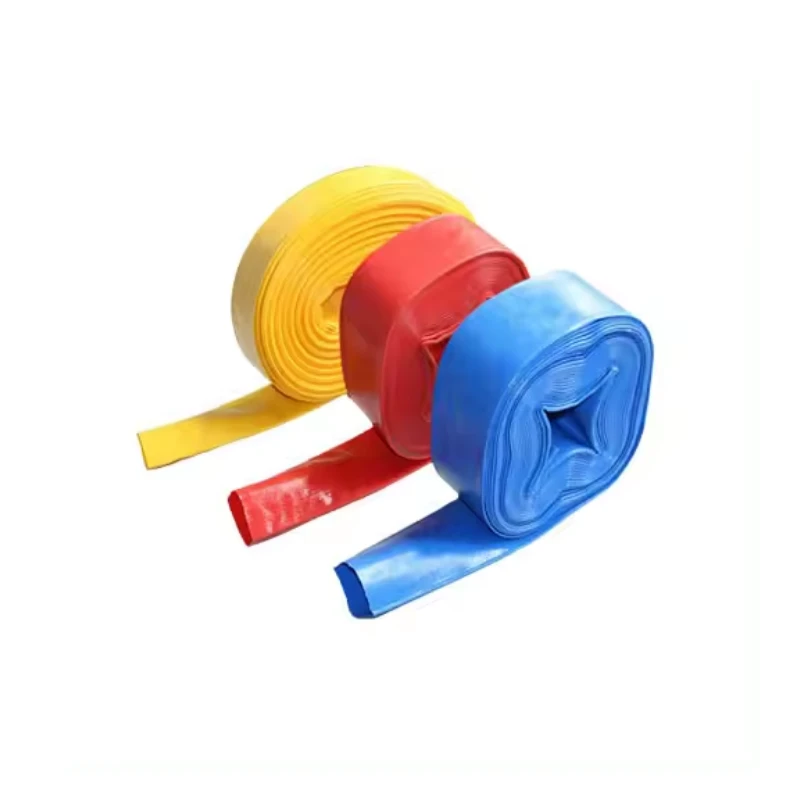PVC Layflat Hose
PVC layflat hose is a lightweight, flexible, and durable hose designed for water discharge and fluid transfer in a variety of applications, including agriculture, construction, mining, and industrial settings. Made from high-quality polyvinyl chloride (PVC) and reinforced with strong polyester yarn, this hose combines strength and flexibility with ease of use.
One of the key advantages of PVC layflat hose is its flat, collapsible design. When not in use, it can be rolled up compactly for easy storage and transport. When pressurized, it expands to full diameter for efficient water flow. Its smooth inner surface minimizes flow resistance and allows for high discharge rates, making it ideal for irrigation, dewatering, and drainage tasks.
The hose is resistant to abrasion, corrosion, UV rays, and a wide range of chemicals, which ensures long-lasting performance even in tough outdoor conditions. It also performs well across a range of temperatures, typically from -10°C to +60°C. Thanks to its lightweight construction, it’s easy to handle, install, and reposition, even over long distances.
PVC layflat hose is compatible with various types of hose couplings and fittings, such as camlocks or quick connectors, allowing for fast connection to pumps, valves, and other equipment.
In summary, PVC layflat hose offers a reliable, efficient, and cost-effective solution for temporary or semi-permanent fluid delivery systems. Its combination of flexibility, strength, and chemical resistance makes it a go-to choice for professionals in agriculture, construction, and beyond.
What Is the Difference Between Flexible PVC and PVC?
PVC or polyvinyl chloride is a widely used plastic material known for its durability, chemical resistance, and affordability. However, there are two main types: rigid PVC and flexible PVC, each with distinct properties and applications.
Rigid PVC is hard and stiff, commonly used for pipes, window frames, and construction materials. It has a strong molecular structure without added plasticizers, making it solid and resistant to impact but not bendable. This rigidity provides structural strength but limits flexibility.
Flexible PVC, on the other hand, is made by adding plasticizers—softening agents that increase flexibility and elasticity. These plasticizers allow flexible PVC to bend, twist, and stretch without breaking. This makes it ideal for applications where flexibility is essential.
While flexible PVC retains many benefits of rigid PVC, including chemical and weather resistance, it tends to have a slightly lower tensile strength due to the added plasticizers. It is also more susceptible to degradation over time if exposed to certain chemicals or extreme heat.
In summary, the key difference lies in the addition of plasticizers: rigid PVC is solid and inflexible, while flexible PVC is softer and bendable. Choosing between them depends on the required mechanical properties for a specific application. Flexible PVC is preferred where movement and bending are necessary, whereas rigid PVC is used when strength and shape retention are priorities.
What Are the Three Types of Flexible Hose?
Flexible hoses are essential components in many industries for transporting fluids, gases, or solids while allowing movement and vibration absorption. There are three main types of flexible hoses, each designed for specific applications and environments:
Rubber Flexible Hose
Rubber hoses are made from natural or synthetic rubber compounds, often reinforced with textile or wire braiding for added strength and pressure resistance. They are widely used for air, water, oil, and fuel transfer due to their excellent flexibility, durability, and resistance to abrasion. Rubber hoses are common in automotive, industrial and hydraulic applications.
PVC Flexible Hose
PVC (polyvinyl chloride) flexible hoses are lightweight and cost-effective options made from plastic materials. They are often reinforced with polyester yarn or spiral wire for strength. PVC hoses are resistant to chemicals, UV radiation, and weathering, making them suitable for water discharge, irrigation, pneumatic lines, and light chemical transfer. Their flexibility and transparency allow easy flow monitoring.
Metal Flexible Hose
Metal hoses are constructed from stainless steel or other corrosion-resistant metals, often corrugated or braided to provide flexibility and strength. They are ideal for high-temperature, high-pressure, or corrosive environments where rubber or plastic hoses would fail. Metal flexible hoses are used in steam, gas, exhaust, and vacuum applications, offering excellent durability and resistance to extreme conditions.
In summary, rubber, PVC, and metal flexible hoses cover a wide range of industrial needs, each with unique features suited to different operating conditions and fluids.





